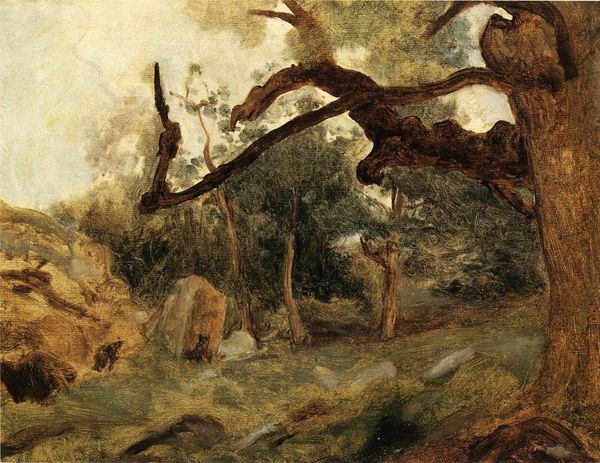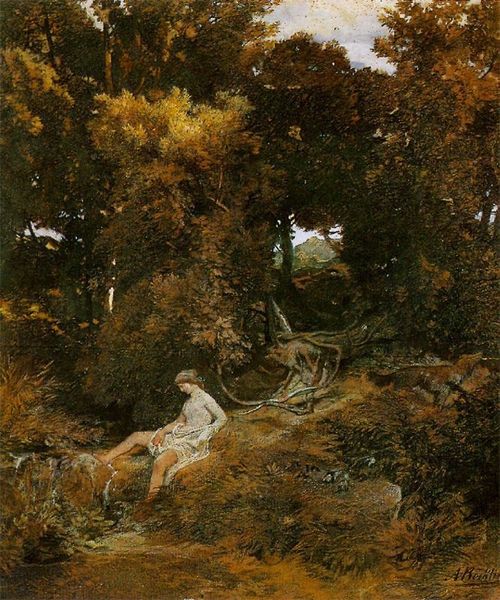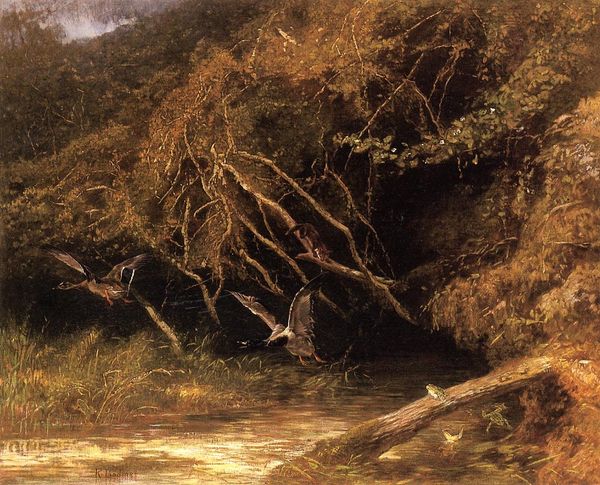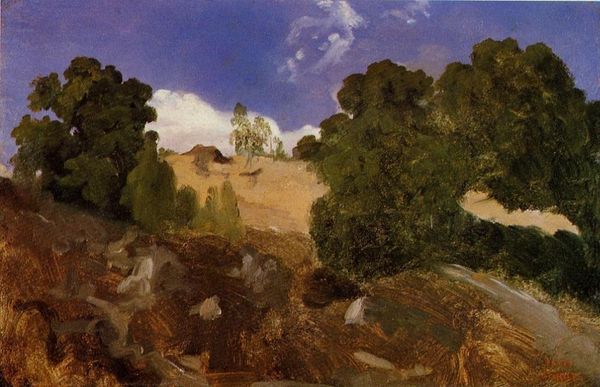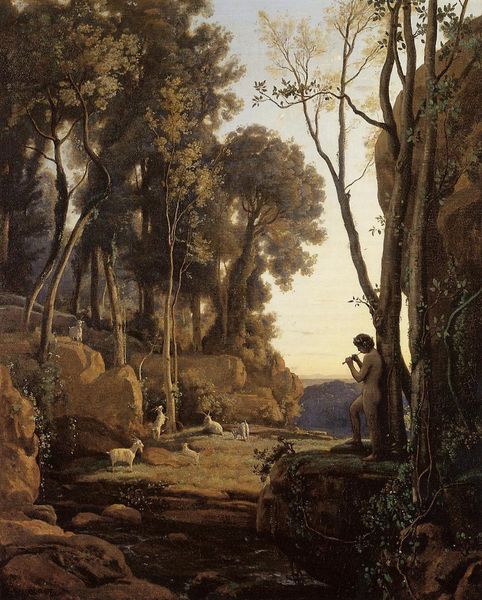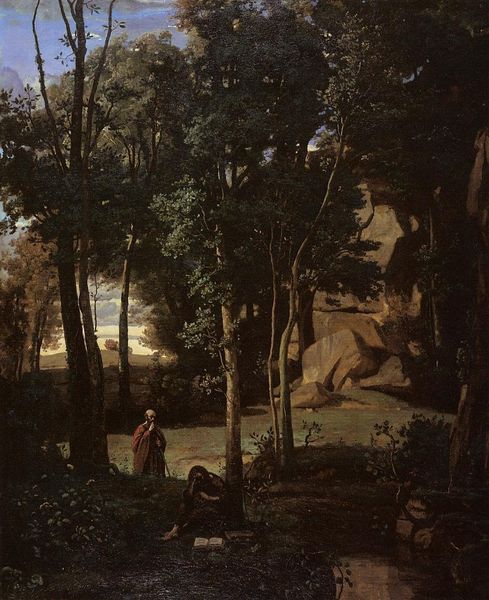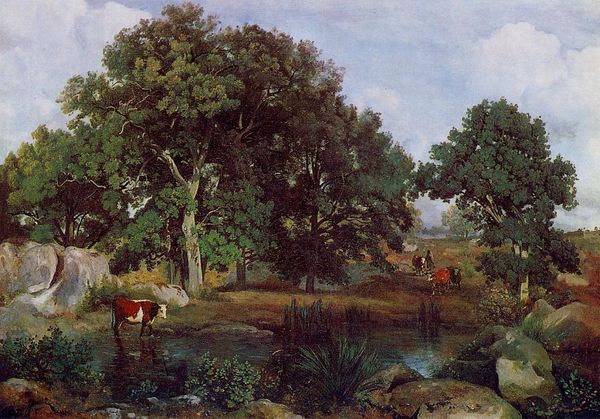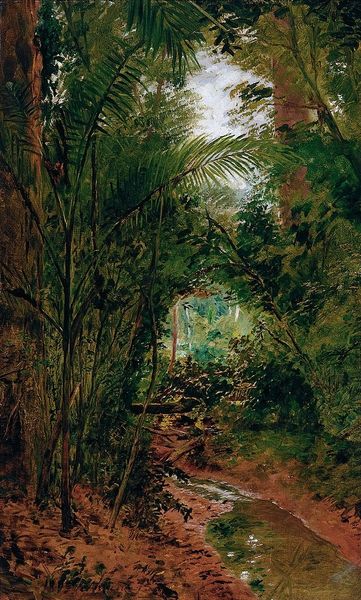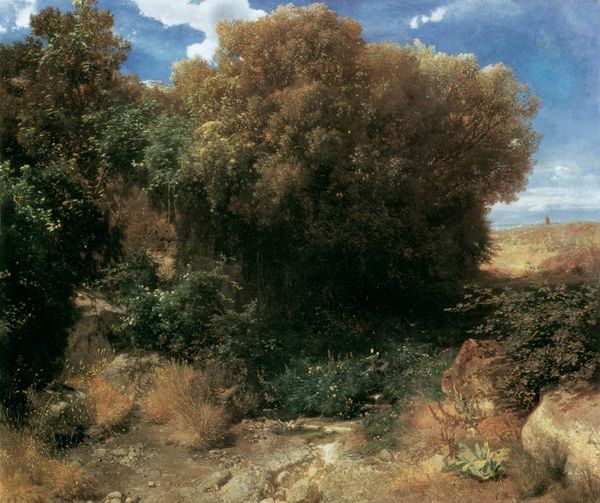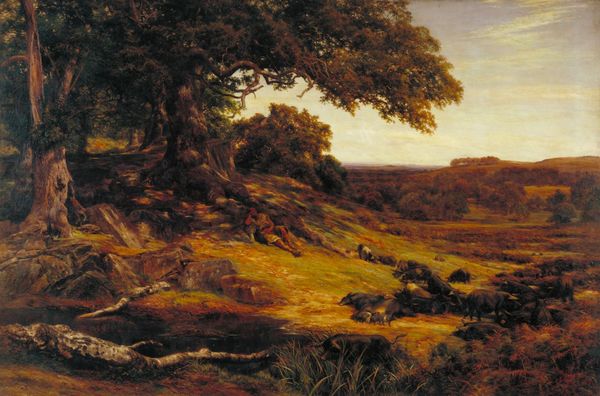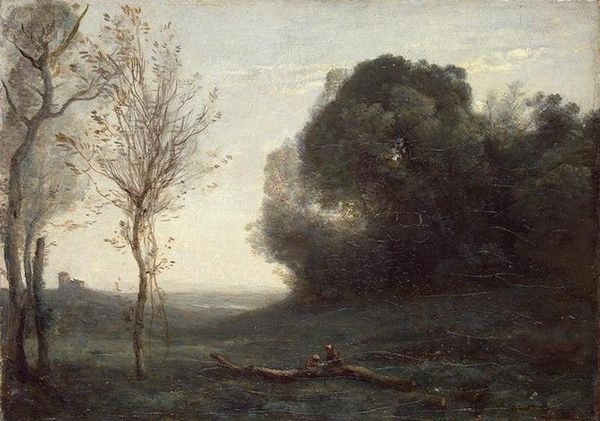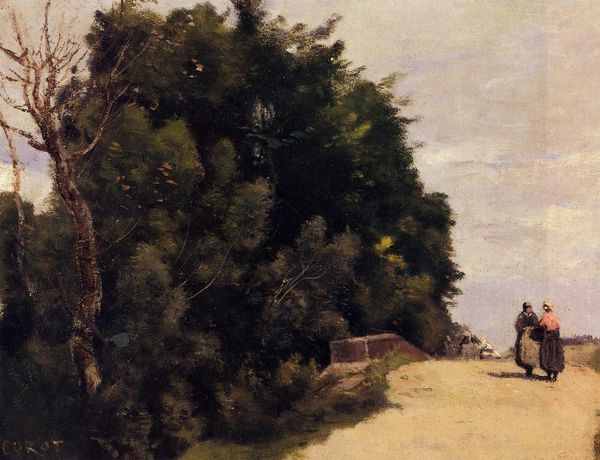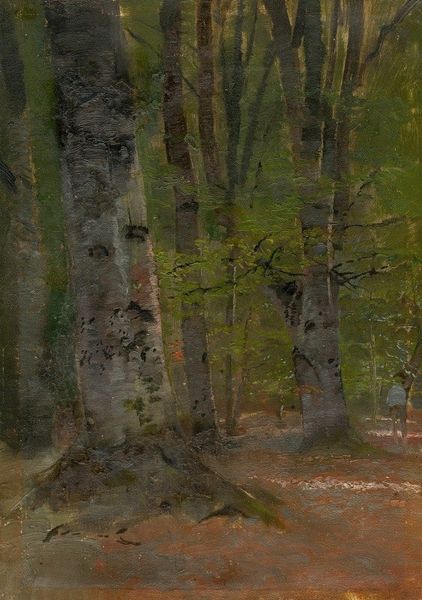
Nemi, the Lake's Edge 1845
0:00
0:00
jeanbaptistecamillecorot
Philadelphia Museum of Art, Philadelphia, PA, US
painting, plein-air, oil-paint
#
tree
#
lake
#
painting
#
plein-air
#
oil-paint
#
landscape
#
figuration
#
oil painting
#
plant
#
romanticism
#
genre-painting
#
naturalism
Copyright: Public domain
Curator: This is "Nemi, the Lake's Edge," painted in 1845 by Camille Corot. He captured this scene using oil paints, adopting the *plein-air* technique. Editor: The dark foreground, all thick paint and gnarled tree trunks, creates a powerful contrast against the distant, luminous lake. It feels deliberately staged, almost theatrical. Curator: The staging is crucial. Corot layers the symbolic weight. Lakes, especially Nemi, held mythological importance, linked to the goddess Diana and rituals of rebirth. He wasn’t merely recording a landscape; he was invoking a cultural memory. Editor: True, but the invocation comes through a very physical, deliberate process. Look at the materiality of the trees, how Corot builds them with such earthy, grounded brushstrokes. It emphasizes the physical labor of making art but also the very real labor happening in the lower corner: that figure reaching into the water. Curator: That figure represents humanity's intimate relationship with nature. Corot shows the landscape as an arena for both mythological significance and daily life. We can sense a timeless, cyclical connection, reinforced by the symbolic water. Editor: Absolutely, the repetitive action suggested in the figure mirrored in the cycles present in nature and art making... I like that resonance, but wonder about Corot’s workshop processes? Did he prepare sketches and then rely heavily on that system when on site or respond purely in the moment, direct onto canvas? We need more understanding of Corot's labor practices! Curator: These layered observations are truly important because we see an amalgamation of the artistic, environmental, and psychological conditions through symbolic images that allow multiple interpretations of place, human experience, and the cyclical renewal that inspires us. Editor: It's amazing how much detail is woven in. This reminds me that, when assessing such a piece, material practices often reveal far more complex webs of significance than mere surface observation.
Comments
No comments
Be the first to comment and join the conversation on the ultimate creative platform.

